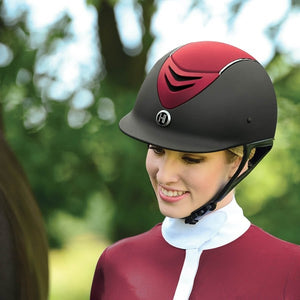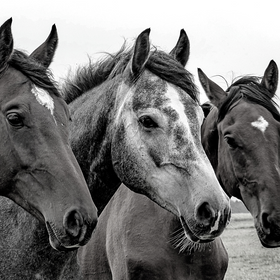
Half Chaps vs. Boots for English Riding
Are you having a hard time choosing between paddock boots and tall boots? It can be challenging to know your preference when you first start riding. Before investing in riding boots, make sure you pick the right style for you and your chosen discipline.
Paddock Boots
Paddock boots are a less expensive option for equestrian footwear. These ankle-high or slightly above the ankle boots can zip on, lace-up, or slip on. If you’re looking for an everyday solution that’s versatile in many weather conditions, paddock boots might be for you.
Pros:
Paddock boots are a bit easier to fit because the sizing is done the same way as your normal shoes. Paddock boots also tend to be cooler than most tall boots for those riding in warmer climates or during hot summer months. They are easy to slip on quickly and run out to the barn.
Paddock boots are generally a cheaper option than tall boots, making them a great choice for kids—whose sizes change regularly.
Cons:
The main downside of paddock boots is the lack of inner calf protection from the saddle. You’ll need to purchase half chaps in addition to the paddock boots. Half chaps are a great solution for preventing inner calf rubbing. This rubbing is uncomfortable and can make you end your ride more quickly than you want.
Keep in mind some shows and classes require tall boots. If you prefer to use paddock boots for daily riding, you may still need to invest in tall boots for competition.
Tall Boots
Tall boots come in many different styles and materials and fall just below the knee. There are very traditional style options and some very stylish fashion options for tall boots. You can also find some well-insulated winter tall boot options.
Pros:
Tall boots protect your inner lower leg from saddle rubbing and discomfort. They are acceptable competitive footwear for English and Dressage shows. The sleekness of the boots also allows for more contact with the side of your horse.
Cons:
Tall boots can be expensive! However, you do generally get what you pay for in terms of quality for tall boots. Breaking in tall boots can take time and you may experience a few blisters in the process. Make sure to break these boots in well before heading to a show. Your feet will thank you!
Sizing for tall boots is a bit different and is ideally done in person. In addition to the foot size, you’ll need to consider your calf width and height.
Finding the right boot for you comes down to your riding style, if you are showing, and personal preference. If you’re not planning on showing in the future and you like the versatility of being able to remove your half chaps, then paddock boots may be the right fit for you. If you can afford to purchase both, you’ll be sure to cross off any cons with a combination—paddock boots for everyday, and tall boots for showing.





